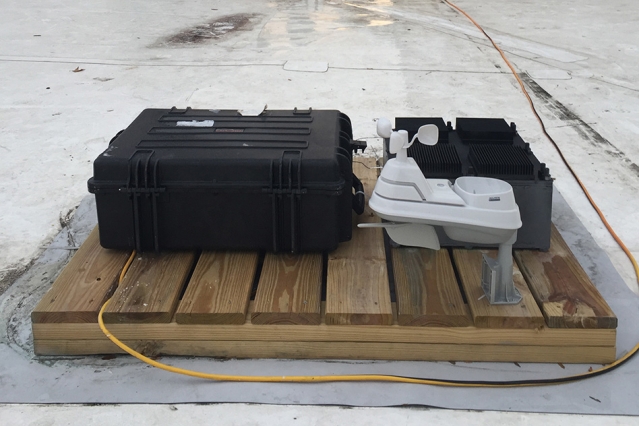By Warren Miller, contributing writer
Finding new sources of sustainable energy is the next frontier in the battle to decrease our reliance on fossil fuels. Solar panels and wind farms have grown in popularity in recent years, but there may be an even simpler way to collect energy from almost anywhere at any time. A research team at MIT has developed the first thermal resonator, a device that generates electricity from the small changes in the ambient temperature around it.
In order to harvest the power from temperature fluctuation, the scientists at MIT needed something both thermally conducive and possessing a high thermal capacity; in other words, something made from materials that both conduct heat and can store up a lot of it. They created a kind of metallic foam consisting of copper or nickel that is subsequently coated with a thin layer of graphene to improve thermal conduction. A waxy substance called octadecane is then added to the mix. A phase-change material, octadecane shifts between liquid and solid phases according to temperature. “The phase-change material stores the heat,” said Anton Cottrill, one of nine credited authors of a paper published in the journal Nature Communications. “And the graphene gives you very fast conduction.”

New technology can harness temperature fluctuations of many kinds to produce electricity. Image source: MIT.
To date, the device has only produced fairly inconsequential amounts of electricity, but the technology does have some advantages over its competitors. It doesn’t require sunlight or a stiff breeze to create power, meaning it can even function while sitting at the bottom of your closet. The researchers tested the device over a period of a single day in an open-air environment, but the device could theoretically produce more power if subjected to more extreme temperature changes (like the middle of the Mojave Desert, for instance). In testing, a beta device generated 1.3 milliwatts of power from a temperature disparity of only 10°C. While that’s only enough energy to power a very small electronic device (such as a thermometer), it’s still impressive after you consider that it was essentially pulled right out from the air around us.
While still in the very early stages, this technology has huge potential for future applications. The drawbacks of other forms of clean, sustainable energy are obvious. All the thermal resonator needs is an environment in which the temperature isn’t being regulated, which basically means anywhere outside. While other technologies have succeeded in harnessing energy from temperature fluctuation before, the thermal resonator created approximately three times the power as those materials per amount of surface area. If this kind of device can be replicated on a larger scale, it could help to provide energy to those areas of the world that don’t get enough sun or enjoy enough wind to make solar and wind energy practical solutions. After all, air — and therefore, air temperature — is almost everywhere, and what goes up must come down (or vice versa).
Advertisement
Learn more about Electronic Products Magazine





